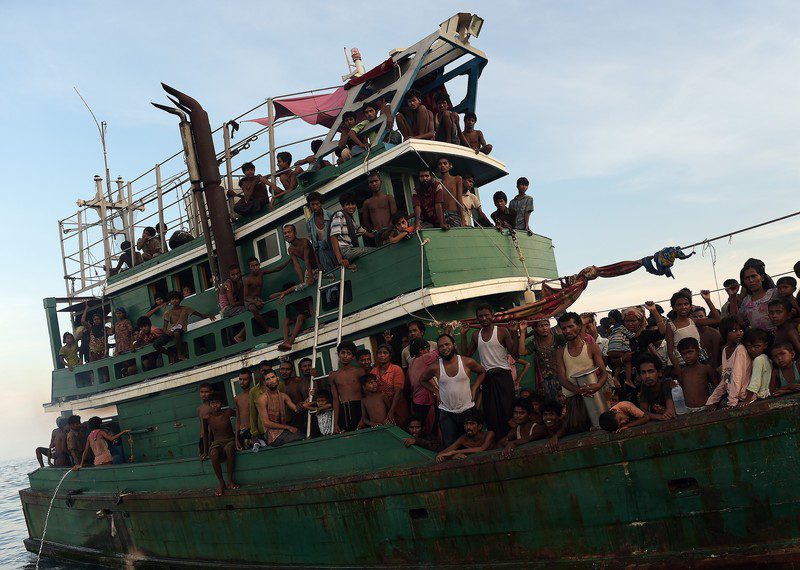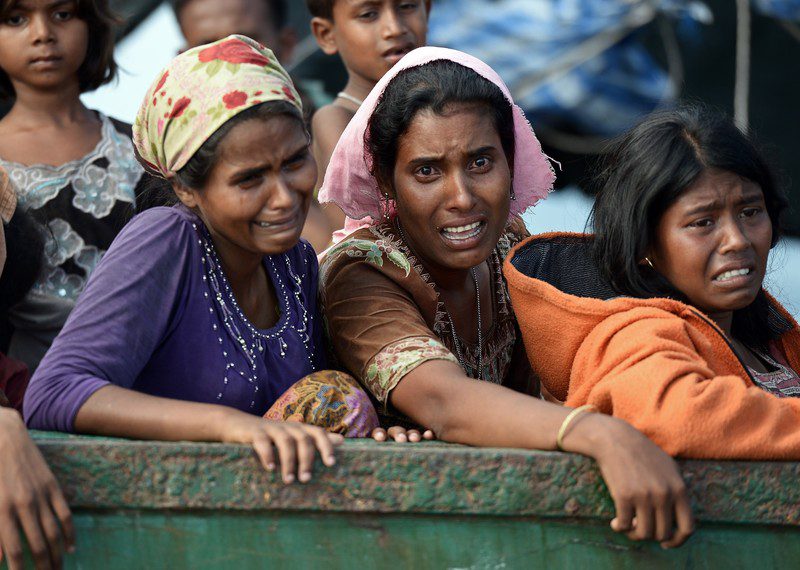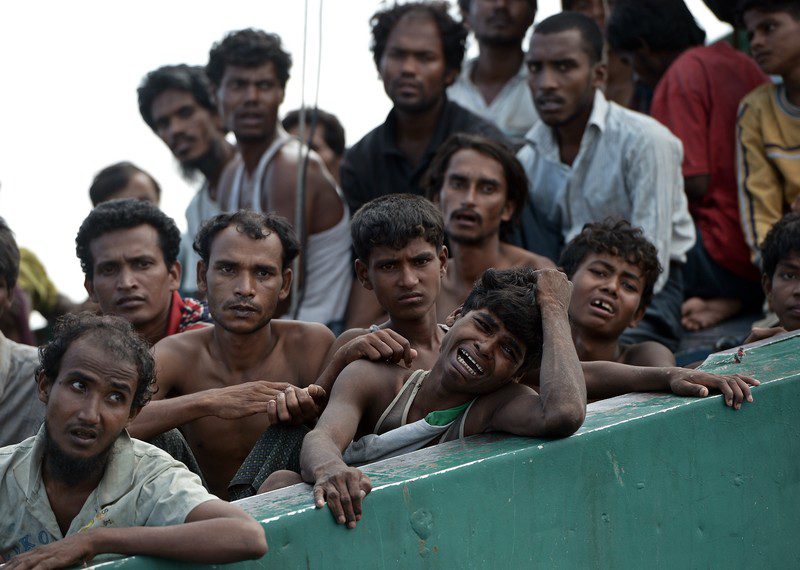The spectre of thousands of Rohingya refugees stranded in the Bay of Bengal and the Andaman Sea off mainland Southeast Asia will loom over Friday’s Regional Summit on Irregular Migration in Thailand’s capital, Bangkok. The roots of this crisis lie in Myanmar, where the Rohingya have faced institutionalized discrimination for decades.
In the past three years, tens of thousands of Rohingya have boarded ships to flee abroad, to escape persecution in Myanmar. However, the issues they face are not new.
Here, Amnesty International assesses the state-sponsored persecution and dire humanitarian situation that is forcing tens of thousands of Rohingya to risk their lives and flee the country they are not permitted to call home.
State-sponsored persecution
More than one million Rohingya are believed to live in Myanmar, where they have faced decades of repression and the denial of their human rights. They are not regarded as an official ethnic group and are denied citizenship under Myanmar’s 1982 Citizenship Law, which effectively renders them stateless. As a result their rights to study, work, travel, marry, practise their religion and access health services are severely restricted.

The Myanmar authorities deny the existence of the Rohingya – insisting on referring to them as “Bengalis” – a term used to imply that they are migrants from neighbouring Bangladesh. The authorities also severely restrict access to Rakhine state, making it very difficult to obtain independent and accurate information on the human rights situation there.
While Myanmar’s President Thein Sein has been praised for sweeping reforms since he took office in 2011, the Rohingya have certainly not benefitted. On the contrary, recent moves by the government seem designed to cement their exclusion further.
Earlier this year, pressure from Buddhist nationalist protesters prompted the President to revoke all temporary registration certificates – known locally as “white cards”. Losing these cards will leave many Rohingya without any identity document. It also makes it highly unlikely they will be able to vote in the general elections, currently scheduled for November this year.
In October 2014, the government announced a Rakhine State Action Plan which, if implemented, would further entrench discrimination and segregation of Rohingya. The announcement of this plan appeared to trigger a new wave of people fleeing the country in boats. The government has not made the plan publicly available – or consulted affected communities about it – adding to concerns that it will be used to further marginalize the Rohingya.
In March 2014, one day before the first national census in Myanmar since 1983, the government backtracked on a promise to allow the Rohingya to self-identify and instead announced that they would have to register as “Bengali” or not be counted, in effect excluding them from the census.
Violence
In 2012, violence erupted between Buddhists and Muslims – the majority of them Rohingya – in Rakhine state, leading to scores of deaths, mass displacement and the destruction of property.
Tensions between Buddhist and Muslim communities have continued ever since. Predominantly anti-Muslim attacks took place in several towns across the country in 2013 and 2014.

Despite allegations that state security forces either directly took part in some acts of violence, or failed to protect individuals from attacks, Amnesty International is not aware of any independent investigations being carried out or state officials being held to account. Instead, Myanmar authorities have arrested and imprisoned Rohingya community leaders who have spoken out about the human rights abuses they face.
Amnesty International continues to receive reports of arbitrary arrests, torture and other ill-treatment of Rohingya in detention, as well as deaths in the custody of Myanmar security forces.
Displacement
The 2012 violence resulted in the displacement of tens of thousands of people. An estimated 139,000 individuals – mostly Rohingya – remain displaced across Rakhine state today, with most living in official internally displaced person (IDP) camps and unofficial temporary shelters. Many of those displaced do not have sustained access to food, medical care, sanitation facilities and other essential humanitarian assistance.
Government-imposed restrictions and the Buddhist Rakhine community’s mistrust of NGOs – due in part to their perceived bias towards the Rohingya and Muslims – continue to hamper aid groups from providing humanitarian assistance to those who have been displaced. Following a visit in July 2014, one senior United Nations official described witnessing “a level of human suffering in IDP camps that I have personally never seen before”.
Growing religious intolerance and discrimination
Myanmar has witnessed a disturbing rise in religious intolerance in recent years, often fuelled by hardline Buddhist nationalist groups and directed particularly at Muslims. The Myanmar authorities have largely failed to take action against those who incite discrimination, hostility and violence. Instead, they have sought to introduce new laws and policies which will further discriminate against the Rohingya – among other minorities.

One such law was passed last week – the Population Control Healthcare Law. It establishes a 36-month “birth spacing” interval for women between child births, apparently playing into fears that minority groups are having more children than the Buddhist majority. The new law is particularly alarming for Rohingya couples, who in the past have been restricted to having no more than two children. At worst, the law could become a blueprint for state population control and even pave the way for state-enforced contraception, abortions or sterilization.
Three other laws aimed at “protecting race and religion” are still before parliament and could give the authorities free rein to discriminate against women and minority groups – including the Rohingya.
Nowhere to go
The deteriorating situation of the Rohingya has pushed growing numbers of them to leave Myanmar in recent years. Since the 2012 violence, UNHCR – the UN Refugee Agency – estimates that more than 110,000 people – mostly Rohingya but also Bangladeshis – have left the Bay of Bengal on boats. From January until March this year, that figure is estimated at 25,000, twice the number as in the same period last year.
Many Rohingya flee across the border to neighbouring Bangladesh where they attempt to board boats bound for countries in Southeast Asia – in particular Thailand and Malaysia – where they are vulnerable to further human rights abuses.
READ MORE: ‘Boat people’ crisis summit an opportunity that must not be missed


